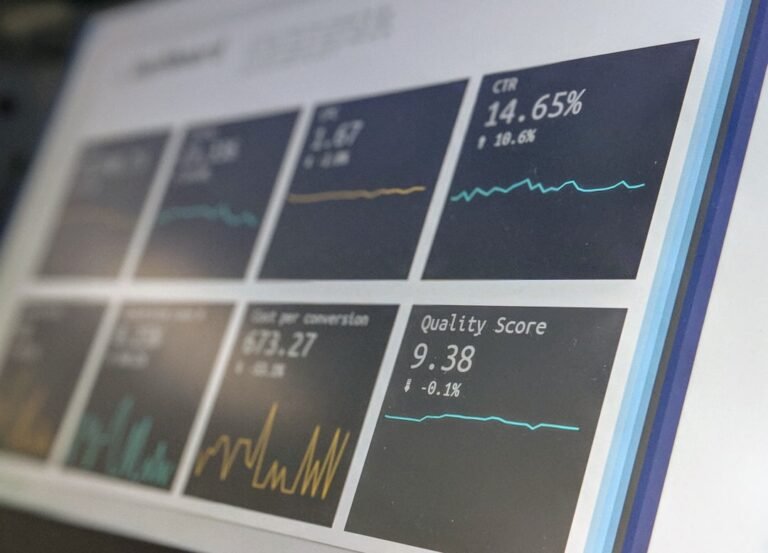Effective On-Page SEO Techniques for British Websites
In the ever-evolving landscape of digital marketing, on-page SEO remains a cornerstone of effective online strategies. As you navigate the complexities of search engine optimisation, understanding the nuances of on-page elements is crucial for enhancing your website’s visibility. On-page SEO refers to the practices you implement directly on your website to improve its ranking in search engine results pages (SERPs).
This encompasses a variety of factors, including content quality, keyword usage, and technical aspects like meta tags and URL structures. By mastering these elements, you can significantly increase your chances of attracting organic traffic and engaging your target audience. As you delve deeper into on-page SEO, it becomes evident that it is not merely about appeasing search engines; it is also about providing value to your visitors.
A well-optimised page should not only rank well but also offer a seamless user experience. This dual focus on search engine algorithms and user engagement is what sets successful websites apart from the competition. In the following sections, you will explore various strategies tailored specifically for British websites, ensuring that your approach resonates with local audiences while adhering to best practices in SEO.
Summary
- On-page SEO is essential for improving a website’s visibility and ranking on search engines, and it involves various strategies such as keyword optimization, content creation, meta tags, URL structure, image optimization, and user experience.
- Keyword research and optimization for British websites should focus on identifying relevant and high-traffic keywords that are commonly used by the target audience in the UK, and incorporating them naturally into the website’s content.
- Content creation and optimization for British audiences should be tailored to their preferences and interests, using language, tone, and topics that resonate with the local culture and trends.
- Meta tags and descriptions for British websites should be carefully crafted to accurately represent the content of each page, and include relevant keywords to improve search engine visibility and click-through rates.
- URL structure and internal linking for British SEO should be organised and user-friendly, with descriptive and keyword-rich URLs, and a logical internal linking structure to enhance navigation and search engine crawling.
Keyword Research and Optimization for British Websites
When it comes to keyword research, understanding the specific language and cultural nuances of your target audience is paramount. For British websites, this means identifying keywords that not only reflect what users are searching for but also resonate with their unique vernacular. You might start by utilising tools like Google Keyword Planner or SEMrush to uncover popular search terms within your niche.
However, it’s essential to go beyond mere numbers; consider the context in which these keywords are used.
Once you have compiled a list of relevant keywords, the next step is optimisation.
This involves strategically placing your chosen keywords throughout your content, including headings, subheadings, and body text. However, it’s crucial to maintain a natural flow; keyword stuffing can lead to penalties from search engines and deter users from engaging with your content. Instead, aim for a balanced approach where keywords enhance rather than detract from the overall quality of your writing.
Additionally, consider long-tail keywords that reflect specific queries British users may have, as these can often lead to higher conversion rates due to their targeted nature.
Content Creation and Optimization for British Audiences

Creating content that resonates with British audiences requires a keen understanding of their preferences and interests. As you embark on this journey, consider the types of content that engage your target demographic. Blog posts, articles, videos, and infographics are all effective formats, but the key lies in delivering information that is both relevant and valuable.
Research current trends and topics that are popular within your niche in the UK, and tailor your content accordingly. This not only positions you as an authority in your field but also fosters trust among your audience. Optimisation goes hand in hand with content creation.
Once you have crafted compelling material, ensure that it is optimised for both search engines and readers. This includes using appropriate headings to structure your content effectively, incorporating relevant keywords naturally, and ensuring that your writing is clear and concise.
Remember, the ultimate goal is to create content that not only attracts visitors but also encourages them to stay on your site longer and explore further.
Meta Tags and Descriptions for British Websites
| Website | Meta Title | Meta Description |
|---|---|---|
| Website 1 | British Website Meta Title 1 | This is the meta description for the first British website. |
| Website 2 | British Website Meta Title 2 | This is the meta description for the second British website. |
| Website 3 | British Website Meta Title 3 | This is the meta description for the third British website. |
Meta tags and descriptions play a pivotal role in on-page SEO, serving as the first point of contact between your website and potential visitors. These elements provide search engines with essential information about your page’s content while also enticing users to click through to your site. For British websites, crafting compelling meta titles and descriptions requires a blend of creativity and strategic keyword placement.
Your meta title should be concise yet descriptive, ideally incorporating primary keywords while remaining within the character limit set by search engines. Equally important is the meta description, which should provide a brief overview of what users can expect from your page. This is your opportunity to capture attention and encourage clicks; therefore, it should be engaging and informative.
Consider using action-oriented language that speaks directly to the reader’s needs or interests. Additionally, ensure that both meta tags are tailored to reflect British English conventions, as this will resonate more effectively with local audiences. By optimising these elements thoughtfully, you can improve your click-through rates and enhance your overall SEO performance.
URL Structure and Internal Linking for British SEO
A well-structured URL is not only beneficial for search engines but also enhances user experience by providing clarity about the content of a page. For British websites, it’s essential to create URLs that are concise, descriptive, and easy to read. Avoid using complex strings of numbers or irrelevant characters; instead, opt for clear keywords that reflect the page’s topic.
For instance, if you have a blog post about traditional British desserts, a URL like www.yoursite.com/british-desserts would be far more effective than www.yoursite.com/12345. Internal linking is another critical aspect of on-page SEO that should not be overlooked. By linking to other relevant pages within your website, you can guide users through their journey while also signalling to search engines the importance of various pages on your site.
When implementing internal links, ensure they are contextually relevant and use descriptive anchor text that provides insight into what users can expect when they click through. This practice not only improves navigation but also helps distribute page authority across your site, ultimately boosting your overall SEO efforts.
Image Optimization for British Websites

Images are an integral part of web content; they enhance visual appeal and can significantly impact user engagement. However, optimising images for SEO is often overlooked by many website owners. For British websites, image optimisation involves several key practices that can improve loading times and enhance search visibility.
Start by ensuring that all images are appropriately sized for web use; large files can slow down page loading speeds, which may deter visitors from staying on your site. In addition to file size, consider using descriptive file names and alt text for each image. This not only aids in accessibility for visually impaired users but also provides search engines with context about the image content.
When writing alt text, be sure to incorporate relevant keywords where appropriate while keeping it descriptive and concise. Furthermore, consider using images that reflect British culture or landmarks when relevant; this local touch can resonate more deeply with your audience and enhance their connection to your content.
Mobile-Friendly and User Experience Optimization for British Audiences
In today’s digital landscape, ensuring that your website is mobile-friendly is no longer optional; it is essential for reaching a broader audience effectively. With an increasing number of users accessing websites via mobile devices in the UK, optimising for mobile usability can significantly impact your site’s performance in search rankings. Start by adopting a responsive design that adjusts seamlessly across various screen sizes; this ensures that users have a consistent experience regardless of how they access your site.
User experience (UX) goes hand in hand with mobile optimisation. As you design your website, consider factors such as navigation ease, loading speeds, and overall layout. A cluttered or confusing interface can lead to high bounce rates as users quickly abandon sites that do not meet their expectations.
Conduct usability testing with real users from your target demographic to gather feedback on their experience navigating your site. By prioritising mobile-friendliness and UX optimisation, you can create an engaging environment that encourages visitors to explore further and return in the future.
Local SEO Strategies for British Businesses
For businesses operating within specific regions in the UK, local SEO strategies are vital for attracting nearby customers. Start by claiming and optimising your Google My Business listing; this free tool allows you to manage how your business appears in local search results and on Google Maps. Ensure that all information is accurate and up-to-date, including your address, phone number, business hours, and website link.
Encourage satisfied customers to leave positive reviews; these testimonials can significantly influence potential customers’ decisions. In addition to Google My Business optimisation, consider incorporating local keywords into your content strategy. This could involve creating blog posts or landing pages that highlight local events or community involvement relevant to your business.
Engaging with local online communities or forums can also enhance visibility within your target market. By implementing these local SEO strategies effectively, you can position your business as a trusted option within your community while driving more foot traffic and online inquiries. In conclusion, mastering on-page SEO is essential for any website aiming to thrive in today’s competitive digital landscape.
By focusing on keyword research, content creation tailored for British audiences, optimising meta tags and descriptions, structuring URLs effectively, enhancing image optimisation, ensuring mobile-friendliness, and implementing local SEO strategies, you can significantly improve your website’s visibility and user engagement. As you continue to refine these practices over time, remember that SEO is an ongoing process; staying informed about industry trends will help you adapt and succeed in an ever-changing environment.
When it comes to improving your website’s visibility on search engines, on-page SEO plays a crucial role. Optimising your website’s content, meta tags, and images can help boost your rankings and attract more organic traffic. However, off-page SEO is also important for building your website’s authority and credibility. If you’re looking for affordable local link building services in Dublin, The Digital Projects can help. They offer a range of services to help you generate high-quality backlinks and improve your website’s search engine rankings.
FAQs
What is on-page SEO?
On-page SEO refers to the practice of optimizing individual web pages in order to rank higher and earn more relevant traffic in search engines. This involves optimizing content, HTML source code, and other elements on a webpage.
Why is on-page SEO important?
On-page SEO is important because it helps search engines understand the content and context of a webpage, which in turn helps to improve the webpage’s visibility and ranking in search results. This can lead to increased organic traffic and better user experience.
What are some key elements of on-page SEO?
Key elements of on-page SEO include optimizing title tags, meta descriptions, headings, content, images, URL structure, internal linking, and mobile-friendliness. These elements help search engines understand the relevance and quality of a webpage.
How can I improve on-page SEO?
To improve on-page SEO, you can start by conducting keyword research and using relevant keywords in your content and meta tags. You should also focus on creating high-quality, valuable content, optimizing your website’s technical aspects, and ensuring a good user experience.
What are some common on-page SEO mistakes to avoid?
Common on-page SEO mistakes to avoid include keyword stuffing, using duplicate content, neglecting meta tags, ignoring mobile optimization, and neglecting internal linking. It’s important to focus on creating valuable content and providing a good user experience.








